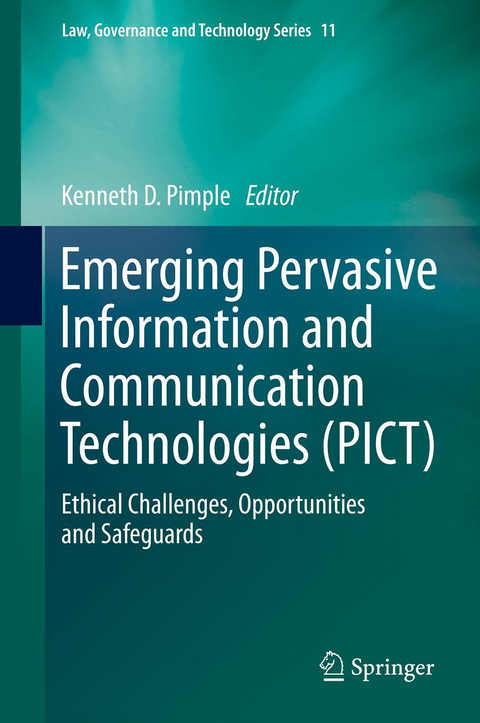Emerging Pervasive Information and Communication Technologies (PICT)
PICT is changing how we live, providing entertainment, useful tools, and life-saving systems. But the very smartphones that connect us to each other and to unlimited knowledge also provide a stream of data to systems that can be used for targeted advertising or police surveillance. Paradoxically, PICT expands our personal horizons while weaving a web that may ensnare whole communities.
Chapters describe particular cases of PICT gone wrong, but also highlight its general utility. Every chapter includes ethical analysis and guidance, both specific and general. Topics are as focused as the Stuxnet worm and as broad as the innumerable ways new technologies are transforming medical care.
Written for a broad audience and suitable for classes in emerging technologies, the book is an example of anticipatory ethics – “ethical analysis aimed at influencing the development of new technologies” (Deborah Johnson 2010).
The growth of PICT is outpacing the development of regulations and laws to protect individuals, organizations, and nations from unintended harm and malicious havoc. This book alerts users to some of the hazards of PICT; encourages designers, developers, and merchants of PICT to take seriously their ethical responsibilities – if only to “do no harm” – beforetheir products go public; and introduces citizens and policy makers to challenges and opportunities that must not be ignored.
Contributors.- List of Abbreviations.- Acknowledgments; Kenneth D. Pimple.- 1. Introduction; Kenneth D. Pimple.- 2. Three Case Studies; Donald R. Searing and Elizabeth A.M. Searing.- 3. Health information in the background; Lisa M. Lee.- 4. Surveillance in the Big Data Era; Mark Andrejevic.- 5. We know where you are. And we're more and more sure what that means; Francis Harvey.- 6. Preserving life, destroying privacy; Cynthia M. Jones.- 7. When cutting edge technology meets clinical practice; Katherine D. Seelman, Linda M. Hartman, and Daihua Yu.- 8 Ethics and pervasive augmented reality; Bo Brinkman.- 9. This is an intervention; Katie Shilton.- 10. Applying “Moral Responsibility for Computing Artifacts” to PICT; Keith W. Miller.- 11. Principles for the ethical guidance of PICT; Kenneth D. Pimple.- Glossary.- Index.
| Erscheint lt. Verlag | 11.9.2013 |
|---|---|
| Reihe/Serie | Law, Governance and Technology Series ; 11 |
| Zusatzinfo | X, 252 p. |
| Verlagsort | Dordrecht |
| Sprache | englisch |
| Maße | 155 x 235 mm |
| Themenwelt | Geisteswissenschaften ► Philosophie ► Ethik |
| Mathematik / Informatik ► Informatik | |
| Recht / Steuern ► EU / Internationales Recht | |
| Recht / Steuern ► Privatrecht / Bürgerliches Recht ► IT-Recht | |
| Schlagworte | Ambient Intelligence • Emerging Technologies • Pervasive Computing • practical ethics • ubiquitous computing |
| ISBN-10 | 94-007-6832-X / 940076832X |
| ISBN-13 | 978-94-007-6832-1 / 9789400768321 |
| Zustand | Neuware |
| Haben Sie eine Frage zum Produkt? |
aus dem Bereich




